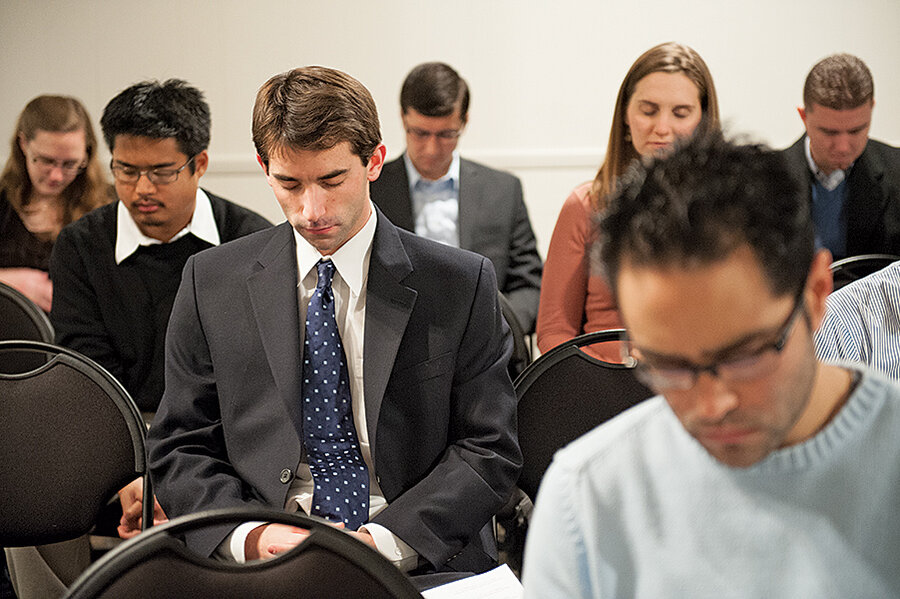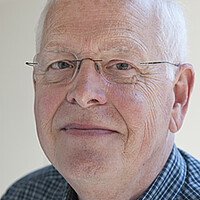Good Reads: From a new America, to women’s career confidence, to a casino slump
Loading...
America is in the midst of two major demographic dramas, according to Paul Taylor of the nonpartisan Pew Research Center. “Our population is becoming majority non-white at the same time a record share is going gray,” he writes. Either change by itself would be “the defining demographic story of its era,” according to an excerpt of Mr. Taylor’s new book, “The Next America.” The fact that both changes are unfolding simultaneously “will put stress on our politics, families, pocketbooks, entitlement programs and social cohesion,” Taylor argues.
The predicted stress arises from, among other factors, sharp differences between the generations in terms of racial makeup, political views, and religious beliefs, according to Pew polling data. For example, Taylor writes that “the young are the least religiously affiliated group in modern American history; the old are the most devout believers in the advanced, industrialized world.” There is much in this clearly presented report demanding thoughtful consideration by political parties, individuals planning for retirement, and churches.
Biggest danger for journalists: Syria
Journalists who cover wars live with danger. At the moment, Syria is the most dangerous place for journalists, according to James Harkin, writing in Vanity Fair. More than 60 journalists have been killed covering Syria’s civil war. After a veteran correspondent for the London Sunday Times was killed in Syria in 2013, many news organizations pulled staff members out of the country.
In their stead came what Mr. Harkin calls “a lightly resourced, laughably paid, almost wholly uninsured cadre of freelancers, often armed with little more than a notebook and a mobile phone.” More than 30 journalists, most freelancers, have been kidnapped in Syria and remain missing. Harkin searches for two Americans among that group – Austin Tice and Jim Foley.
Harkin does not find either man. But he concludes that freelancers covering the Syrian conflict “are some of the most cunning and resourceful people you’ll ever meet. If anyone can make it back, they can.”
The nation’s youngest UN ambassador
Samantha Power, the youngest United Nations ambassador in American history, is profiled by Manuel Roig-Franzia in The Washington Post magazine. A graduate of Yale and Harvard Law School, Ms. Power won the 2003 Pulitzer Prize for a book that began as a law school paper, “A Problem From Hell: America and the Age of Genocide.”
The book attracted the attention of Barack Obama, who hired Power for his Senate staff. After she served as a foreign-policy adviser on Mr. Obama’s 2008 presidential campaign team, her upward rise was derailed after she told an interviewer that Hillary Rodham Clinton was “a monster.” She spent Obama’s first term as president learning what Mr. Roig-Franzia calls “the rites of silence” on the White House national security staff before being nominated for the cabinet-level UN job in June 2013.
The profile chronicles Power’s efforts to balance her passion for curbing human rights abuses with her realization that “[m]uch of it is beyond your control – no matter what....”
Women’s confidence gap
ABC News correspondent Claire Shipman and BBC anchor Katty Kay examine what they call “a vast confidence gap that separates the sexes” in the latest issue of The Atlantic. They see that gap as a key factor explaining the underrepresentation of women at the top of many professional fields.
The authors admit that their research into the puzzle of why many high-achieving women also seemed to lack confidence initially left them gloomy. But later they came to see confidence as “the stuff that turns thoughts into action.” Taking action, they argue, “bolsters one’s belief in one’s ability to succeed.”
The natural result of low confidence is inaction, they say. When women don’t act, or think too much, they hold themselves back. When they do act, women perform as well as men.
Casinos know when to fold ’em:
The casino gambling business is taking a beating, Bloomberg Businessweek’s Christopher Palmeri reports. The gambling industry is bumping up against two unlucky trends: an oversupply of casinos and a weak economic recovery that has squeezed spending by women over age 50, a key demographic for casinos.
There are a variety signs of the tough times hitting the $38 billion US gambling industry. In January, New Jersey’s Atlantic Club Casino Hotel closed, a victim of the 44 percent drop in Garden State gambling revenue since 2006. In June, Harrah’s casino in Tunica, Miss., will close. Gambling revenue in the state plunged from $1.2 billion in 2006 to $738 million last year.
States that ramped up gambling operations as a way to boost tax revenue – often using projections laced with a gambler’s sense of optimism – have been hard hit. In Ohio, for example, voters were told to expect $1.42 billion in annual gambling revenue. The take was $821 million last year, a shortfall of 42 percent.






